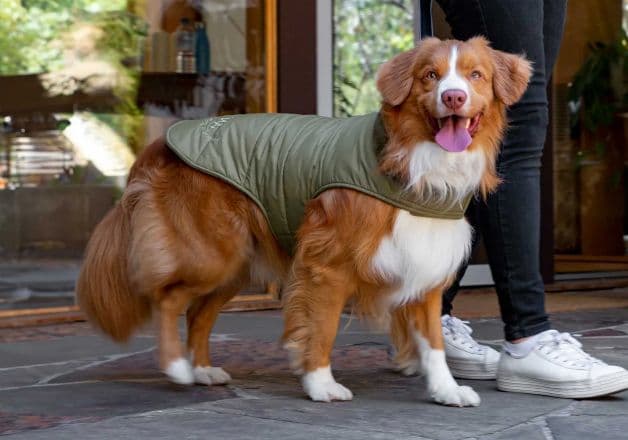
How Much Polyfill Does My Horse Rug Need?
Understanding how a polyfill lining works in a horse rug can go a long way to ensure your horse's rug is actually keeping them warm in colder months.
What is polyfill in a horse rug?
Polyfill is very similar to the poly fibre that you get inside a pillow (much like hobby fill). Polyfill used in horse rugs comes in long flat lengths of a roll.
The lining works much like your roofing insulation. It traps heat in the air pockets in the polyfill lining and slows down the radiant heat out of the rug and away from the horse. We use either 200 grams or 300 grams of polyfill in our Alpine range of winter horse rugs. So a rug advertised with 300 grams of polyfill means that for every square metre of laid-out polyfill lining, it will weigh 300 grams. For more information, check out our Lined Winter Turnout Range.
A good analogy is to think of a cotton ball you may have in your medicine cabinet. When you take it out of the packet, it is relatively compact (i.e. close to what 300 grams of polyfill is like inside a horse rug). It has good insulation properties as there are lots of tight air spaces to act as insulators. However, if you start pulling it apart and spreading it thinner, you lose those insulated air pockets, reducing its effectiveness.
We’ve done extensive testing with different grades of polyfill and insulation effects. Some manufacturers offer rugs with only 100–150 grams of polyfill, which is more for marketing than actual benefit. Below 200 grams of polyfill, there isn’t enough body in the filling to trap air and create an effective insulation layer.
Comparison of polyfill lining: 300 grams vs 200 grams
There is also a huge variation in the quality of polyfill. Most polyfill used in horse rugs is produced in India, which is often inferior to Chinese-produced polyfill. (At Caribu, we only use Chinese polyfill.) For example, a 300-gram polyfill from India can be as effective as a 200-gram polyfill from China due to the technology used to create the open weave and its ability to "bounce back" instead of flattening out over time.
The actual insulation performance difference between a good 200-gram and a 300-gram polyfill isn't as dramatic as you might think. Choosing between them depends on your horse, the climate, and how early or late in the season you rug your horse. Horses with shorter coats or those that feel the cold (like young or older horses) might benefit more from a heavier fill.
Medium fill (200 grams of polyfill)
- Ideal for: Warmer Australian winters.
- Details: 200 grams offers versatility and allows rugging earlier in the season. However, multiple under rugs may still be needed in the middle of winter.
Heavy fill (300 grams of polyfill)
- Ideal for: Cold Australian winters.
- Details: 300 grams is the most popular filling, providing warmth without requiring under rugs. It also compresses less over time, offering better long-term insulation.
Polar fleece lining
Our polar fleece-lined combos bridge the gap between unlined turnout rugs and 200-gram polyfill rugs. Polar fleece provides added insulation and wicks moisture away from the horse. For comparison, think of a polar fleece-lined rug as performing similarly to a 100 gram polyfill rug.
Why is a 300 gram rug good for both Queensland and southern states?
A 300 gram rug is great across Australia because of acclimatisation. In Queensland, people consider it cold when night temperatures drop to 15°C, while in southern states, the cold isn't felt as much until temperatures are much lower. Horses are the same and adjust to their environment.
Layering rugs
Rarely is a winter rug on its own sufficient. Most owners use under rugs to adjust insulation levels based on climate and their horse's needs.
What if 200 grams is too warm?
If 200 grams is still too warm for your horse, consider using an unlined turnout rain sheet with an under rug or two to achieve the desired insulation level.
Want to learn more?
Confused by terms like 'GSM', 'grams', and 'deniers'? You're not alone! Learn more about the difference here.


